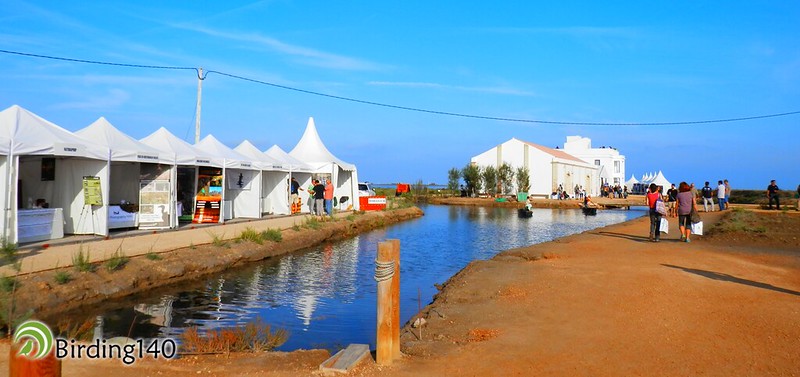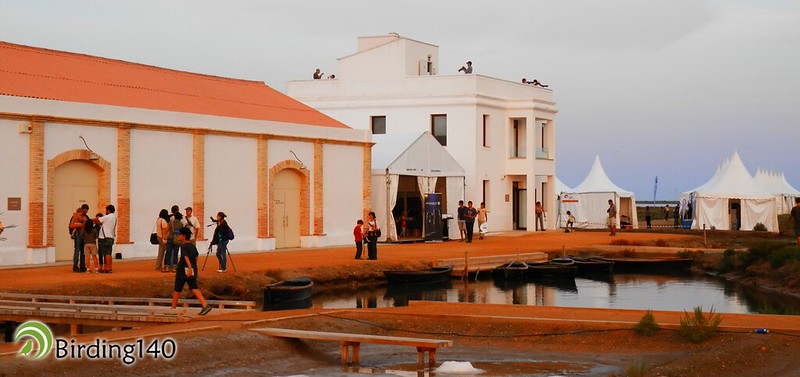On the weekend of September 27th and 28th we travelled to the Ebro Delta. Our plan was to attend the first edition of the Delta Birding Festival in MònNatura, take part in the festival boat trip to watch sea birds and, if we had time, visit the Nature Reserve of Riet Vell.
The Ebro Delta
The Ebro Delta is an impressive engineering work of natural origin. During the last 4500 years, the Ebro River has managed to make its way into the sea for 22 kilometres, forming the third largest delta of the Mediterranean, just after the Nile and Rhode deltas. Along its 320 square kilometres of completely plain lands there is a rich variety of landscapes: endless sandy beaches dominated by impressive mobile dunes; two large marina bays, in El Fangar to the north and Els Alfacs to the south; salt lagoons close to the coastline; little water springs that are still in the contact area between the delta and the continent; remains of the old riverside forest on the banks of the Ebro River; and, finally, the large artificial freshwater wetland constituted by the rice fields of the delta.
As you can imagine, a wetland with such a diverse scenery is necessarily a paradise for birding. It is indeed. No less than 60 % of the European bird species are present at some point of the year in the Ebro Delta.
Delta Birding Festival 2014
During our visit to the first edition of the Delta Birding Festival, we were struck by the important presence of exhibitors of optics and complements. Inside the enclosure of MònNatura, the festival was divided in three exhibitor areas: one dedicated to optics and complements, another one to general-interest exhibitors, and a main tent reserved for the three organizing entities.
The area dedicated to optics was located on the banks of the La Tancada lagoon. As we were walking, we had the exhibitors’ stands on our left, and on our right a row of ground-based telescopes directed towards the lagoon. They were placed from lesser to greater range, available for visitors to test them and admire the birds of La Tancada, as well as the enormous power of some of the telescopes.
In the central tent, beside the viewpoint tower of MònNatura, ORYX showed its extensive catalogue of books for sale, and the Catalan Ornithological Institute (ICO) and the Fundació Catalunya-La Pedrera were showing their activities and selling some of their publications.
The area dedicated to general-interest exhibitors, as opposed to the optics area, was smaller than we expected. Among others, at the Delta Birding Festival we could find the Quercus magazine, Andalusian Wilderness showing activities and lodgings of their associates, Wildwatching Spain with their offers for brown bear and Iberian wolf watching in the Cantabrian Mountains, and Extremadura, which is always there, with their important range of ornithological tourism.
Several conferences that sounded very interesting were held at the Delta Birding Festival 2014, although we could only attend the ones from Juan José Negro about Doñana and Pep Arcos about the marine SPAs.
Juan José Negro showed us the history of the foundation of the Doñana Biological Station and of the pioneers that travelled around Europe searching for funding to buy the first protected lands in Doñana. The conference was very enjoyable, and we learn a few little-known curiosities about the pioneers of Doñana.
Pep Arcos, for his part, showed us the importance of programmes like LIFE+ IBA Marinas (2004-2009) and LIFE+ INDEMARES (2009-2014) to identify the marine areas that could belong to the Natura 2000 network. Thanks to them, it has been possible to create 39 new marine SPAs, which increase from 1 % to 8 % the protected marine surface in Spain.
MònNatura Delta de l’Ebre and the Delta Lagoon Project
The Delta Birding Festival was held in the magnificent interpretation centre of MònNatura Delta. Located on the banks of the brackish lagoon of La Tancada, it extends over part of the old salines of Sant Antoni.
Salt production in Sant Antoni finished in the 1950s, and in 1980 the facilities were turned into a fish farm that was abandoned in 2003. With the LIFE+ Delta Lagoon Project, the pool system has been transformed into a structure of small lagoons connected to the sea. The old dykes that contained the pools have been reduced, and small islands have been created to favour bird nesting. Among the inhabitants of MònNatura we can also find the Spanish toothcarp, a small fish adapted to waters with high salinity, and endemic to the Iberian Peninsula. Today, MònNatura and the old saline of Sant Antoni is an idyllic place for watching birds like the Slender-billed Gull, the Common Tern, the Little Tern, the Gull-billed Tern, the Pied Avocet, the Common Redshank, the Kentish Plover and, of course, the large concentrations of flamingos of the La Tancada lagoon.
Among the activities of the Delta Birding Festival, some visits were organized to the lake of La Alfacada, also recovered by the Delta Lagoon Project, and where the European pond turtle was reintroduced. Moreover, visitors could enjoy boat trips to watch pelagic birds. We picked this last choice with the hope of seeing the only endemic sea bird in Spain: the Balearic Shearwater. But this would happen on Sunday. Little by little, the night was falling in the Delta Birding Festival, and the blood thirsty mosquitoes were stalking. It was time to go home and get some rest for our next day birding adventure. We will talk about it next week. Don’t miss it!














